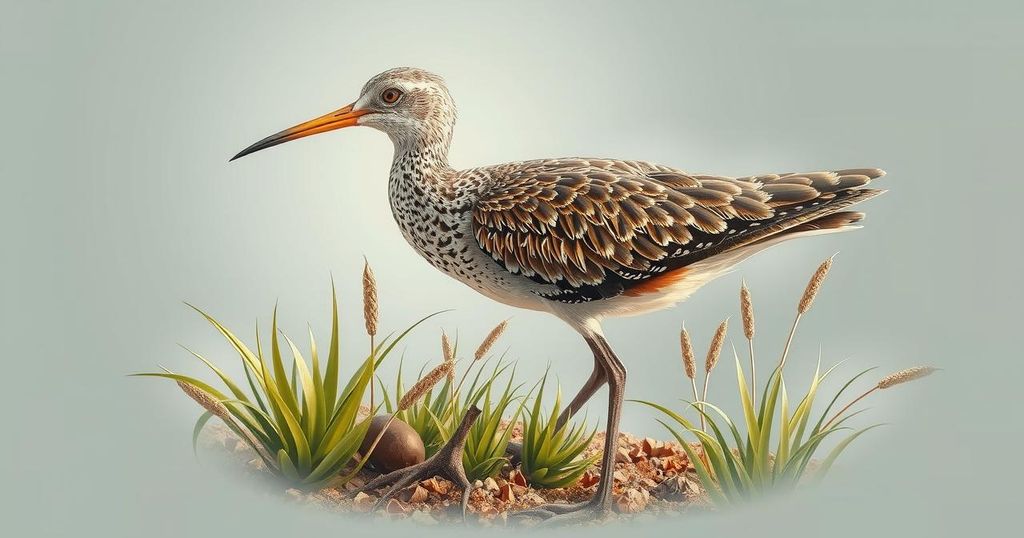Recent research confirms the extinction of the Slender-billed Curlew, the first known global bird extinction from mainland Europe, North Africa, and West Asia. Last observed in 1995, its decline is attributed to habitat loss, hunting, and climate change. Experts warn that urgent conservation actions are necessary as migratory species face increasing threats, echoed by the uplisting of 16 other migratory shorebird species.
A new publication has documented the extinction of the Slender-billed Curlew, a migratory shorebird that once bred in western Siberia and sought refuge during winter months around the Mediterranean. The last confirmed sighting of this species was in north Morocco in 1995. This event marks a tragic milestone as it is the first recognized global bird extinction from mainland Europe, North Africa, and West Asia, highlighting significant conservation failures in these regions.
The study, conducted by a collaborative team from the RSPB, BirdLife International, Naturalis Biodiversity Center, and the Natural History Museum, reveals that since 1500, approximately 164 avian species have been declared extinct according to the IUCN Red List. The population decline of the Slender-billed Curlew can be attributed to habitat destruction, pollution, hunting, and potential climate change effects, compounded by the drainage of wetlands for agricultural purposes.
Dr. Alex Bond, Senior Curator at the Natural History Museum, shared insights into the extensive efforts taken to locate the curlew after it failed to return to its wintering site at Merja Zerga, Morocco. Despite searching extensive areas, there have been no sightings. He emphasized the approaching climate challenges, stating that climate change, habitat destruction, and pollution represent ongoing threats to avian populations.
The extinction of the Slender-billed Curlew serves as a stark warning that no bird species is safe from the threat of extinction. Alex Berryman of BirdLife International noted that the continuing loss of migratory species demands urgent conservation attention, as over 150 bird species globally have become extinct since 1500. Furthermore, the recent uplisting of 16 migratory shorebird species to higher threat categories indicates a concerning trend of population declines.
Nicola Crockford from the RSPB expressed grave concern over this extinction, advocating for stronger international conservation measures. She punctuated the interconnectedness of migratory birds across nations, stressing that the actions of one country can significantly impact the conservation status of species in others. The extinction of the Slender-billed Curlew underscores the urgent need for enhanced action in nature conservation, parallel to global calls for combating climate change.
The Slender-billed Curlew, once a common migratory bird in Europe and parts of Asia, has not been sighted since 1995. Its extinction reflects profound environmental challenges, including habitat destruction, hunting, and climate change. The declining bird populations illustrate a broader crisis threatening biodiversity worldwide. This event is historically significant as it marks the first bird species extinction from mainland Europe, North Africa, and West Asia, raising alarms on the effectiveness of current conservation strategies.
The extinction of the Slender-billed Curlew serves as a wake-up call for global biodiversity conservation efforts. It highlights the interconnectedness of migratory species and the impacts of environmental degradation and climate change. Immediate and coordinated conservation actions are imperative to prevent further avian extinctions. The collaborative endeavor among conservation organizations signifies a vital step toward understanding and combating the threats facing wildlife worldwide.
Original Source: www.birdlife.org






